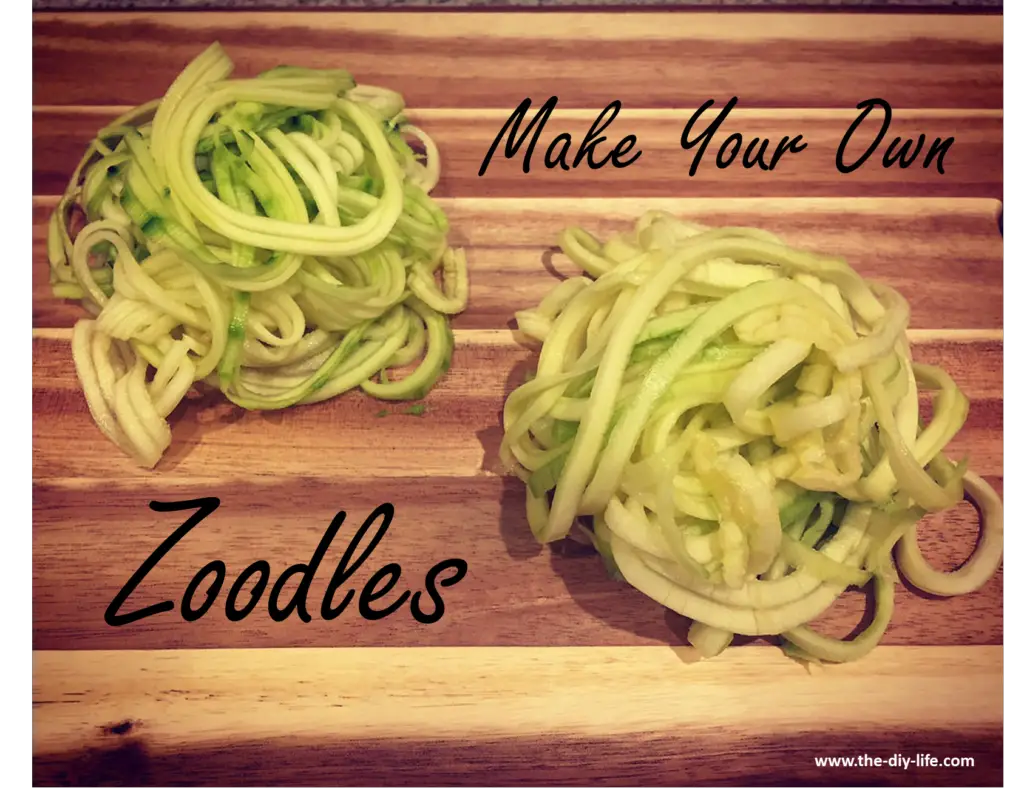

Pat down the zucchini noodles with paper towels to remove excess moisture before cooking or dressing them. There are a few ways you can prevent this. "So many people complain about how zucchini noodles get mushy and watery," said Gellman. Zucchini is 95% water, so it’s easy for your final product to end up a watery mess.
#Make zoodles how to#
Courtesy Vidya Rao How to avoid soggy, watery zoodles Blanching is probably not the best way to go. Note: This method yielded the limpest noodles, so I wouldn’t suggest it. Add zucchini noodles and cook for just 2 minutes. Courtesy Vidya Rao Blanchingīring a pot of water to a boil. Yes, you can cook zucchini noodles in the microwave. This method is super easy and retains the crunch of the zucchini. Place your zucchini noodles in a microwave-safe bowl. Parchment paper ensures that the zucchini noodles won't stick to the pan. Remove and enjoy as is or add a little sauce. Line a baking sheet with foil or parchment paper (I like parchment paper because the noodles are less likely to stick) and put in the oven for 10 to 12 minutes, until you see the noodles start to brown a little. Drizzle with oil, sprinkle with salt and any desired spices and toss with your hands. (See more on that below.) Tongs are a zucchini noodle's best friend. Note: Don’t salt the zucchini before you saute it the noodles will release more water and they’ll end up limp. Remove from heat and add to sauce or add some salt and eat as is. Toss with tongs and let the zucchini cook for just a minute or two. Toss the zucchini noodles in some oil, and depending on the final dish, you can add spices like garlic powder, an Italian spice mix, crushed red pepper or shichimi togarashi. For picky eaters, Gellman recommended mixing half spaghetti and half zucchini noodles, so you get the added benefit of vegetables with the texture of pasta. You can also heat up sauce, like marinara, and add the noodles to the sauce just before serving, letting the heat from the sauce warm them. Gellman suggested serving them up cold with a peanut sauce or tahini-yogurt sauce, or adding them to hot soup. You can use the raw noodles as a base for salads or even poke. In fact, I prefer to eat them raw with homemade pesto for maximum crunch. Zucchini noodles are a gift for those days you don’t want to spend a ton of time in the kitchen because they cook quickly. You can use your standard, run-of-the-mill vegetable peeler to make zucchini noodles. You can keep these ribbons wide for a more pappardelle-like zucchini noodle or stack them on top of each other and slice them into thinner noodles. The more pressure you use, the thicker your ribbons will be. Use the peeler as you normally would, with smooth strokes from one end of the zucchini to the other. Your everyday vegetable peeler will result in wide, ribbon-like pieces of zucchini. Cut off the ends and run the zucchini over the mandoline - but please be extra careful not to slice your hand! Vegetable peeler Set the mandoline to 1/8 inch and have the julienne blades face up. You can make noodles from carrots, sweet potatoes, turnips, kohlrabi, cucumbers, broccoli stalks and more. It comes with multiple blades that allow you to vary the thickness of your noodles, which is beneficial when you work with different vegetables. It's fast and easy to use, and, if you think you’ll make vegetable noodles often or for your whole family, it’s worth the $25 investment. If you plan to make zucchini noodles often or in big batches, the tabletop spiralizer is worth the investment. "You have all the fiber in that peel," she said, "Plus that beautiful color." You’ll also end up with some little zucchini nubs, which you can chop up and use in other dishes over the following couple of days. Regardless of the method you choose, Gellman recommended keeping the peel. There are multiple ways to make zucchini noodles - with and without a spiralizer. Avoid ones that are starting to soften, get flexible or turn brown. Look for zucchini or squash that is firm to the touch and has slightly glossy skin. You can use zucchini, yellow squash or a combination - there’s no real difference in how your noodles will turn out.


 0 kommentar(er)
0 kommentar(er)
